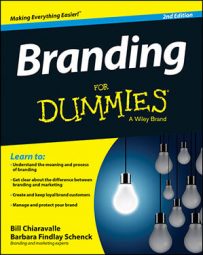It will be difficult to build your brand without the help of ads. People love to hate ads — especially ads that interrupt them with loud-volume, fast-talking messages that have nothing to do with them or their interests. On the flip side, people also love to watch, read, and talk about ads, evidenced by viewership of World Cup, Super Bowl, and award-ceremony ads and viral sharing of ads on social media.
The difference between an annoying and an astonishingly effective ad hinges on whether or not it reaches and wins interest from the person viewing it. And no medium does customer targeting better than digital ads, which is why advertising investments keep shifting toward the online channel.
Online ads are among the least expensive to run and among the easiest to target and monitor for return-on-investment, because they generate measurable clicks through to your website. Here’s a look at the digital-advertising menu:
Banner ads run across the top of third-party sites. They almost disappeared due to customer resistance but made a comeback thanks to inclusion in the Google AdSense program. They rely on a creative concept that prompts consumer to click the ad, at which time the advertiser gets charged and the website owner gets paid.
Pop-up and pop-under ads sit over or hide under third-party websites. They vie with robo-call telemarketing for the most-annoying forms of advertising. Pop-up blocking software is in wide use and Google, for one, doesn’t allow pop-ups on its sites.
Pay-per-click (PPC) ads are small ads in the margin of search engine or social-media pages. The advertiser pays only when someone clicks the ad to reach the advertiser’s site.
Search ads are all-word ads that display on the screens of search-engine results because they focus on the same keywords as those in the search. Google AdWords and Microsoft adCenter (representing Bing and Yahoo!) are the leading search ad programs. Like pay-per-click ads, the advertiser pays each time someone clicks on the URL presented in the ad.
A companion program to Google AdWords is the AdSense advertising program, which allows high-traffic information sites to earn revenue by displaying AdWords ads on their web pages.
Social-media PPC ads work a lot like search ads, except they target people rather than keyword topics. Almost every social-media network has a way to let you place ads. Visit the network’s help center or enter the name of the network you’re interested in, along with the word “advertising,” in a search engine to find the latest advice to follow. Success in social-media ads follows the same rules as success in any other effective ad:
Target your audience. If you’re selling high school graduation photo packages, target high school graduates or their parents.
Match content to the format of the social network you’re using. The word for this match is native advertising, because it’s advertising that looks like it’s part of its media environment.
Grab attention with interesting, informative, humorous, or entertaining information.
Advance your brand message.
Make people want to know more.
Give people a reason to take action, including clicking and sharing.
Social-media posts display in your followers’ feeds — if algorithmic forces are with you. Promoted content — called paid reach — gets seen by a wider audience than regular posts — called organic page reach — because it doesn’t get weeded out by Facebook’s sorting algorithms or buried in the deluge of Twitter or other social-network posts.

